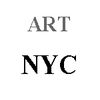[Closing 100 Challenge by Roberta Gattel]
Usually, when you begin a new activity, you start with the best intentions and then scale down your momentum and expectations. Scrolling through the texts I wrote for the 100 Challenge in chronological order, I realized that it was the opposite for me.
The first texts I wrote were dry and short. As the Challenge continued, they began to lengthen and become more and more complex. What I wrote had to be felt; it had to have weight, and it had to respond to an urgency of mine. It wasn't about keeping a diary but about building a dialogue, intimate and sincere, between my lived experience and my literary experience, between my present and my past, uniting contrasting voices, fishing out the words of authors I admired, comparing the points of view of people I met.
The result was a journey, a discovery, a mission in this exact order. Recovering one hundred books written by women was as much a journey through time and affections as it was using memories and experiences as material for reflection. Remembering why I loved a poem or got fired up reading a novel also meant remembering the issues that made the person I was and who I no longer fall in love with or get fired up. Continuing the journey, book after book, story after story, realizing that the things to say were not exhausted with the texts I wrote but were increasing, this was the discovery. How much life and how much thought had I accumulated over the years?
How many unsaid words had remained buried inside me, waiting to be pulled out and listened to? This is why the 100 Challenge towards its epilogue became a mission: my duty was to give voice to a large part of me that I kept hidden for a long time. In this mission, there was a sense of duty and justice towards myself, but not only that. There was also a lot of hope: that of being read and understood, of being able to speak for those who had lived the same experiences as me, to convey a message, to get it to someone. And finally, there was the strong need to demonstrate something. It is possible to produce something artistic without necessarily abstracting reality. It is possible to make committed art instead of re-proposing baroque and narcissistic mannerisms. Making committed art without creating elite material and finding a language and a medium for everyone is possible.
This is why I chose a drawing style that is very different from the one I usually use: I chose the style of someone new to paper and ink: a neutral stroke, sometimes undecided, with soft and naive lines. I represented everyday, direct, and descriptive images and avoided abstractions and symbolism.
The texts also follow the same line: they have a simple language and a first-person narration; maintain a strong connection with reality and address issues such as social class, racism, gender discrimination, misogyny, patriarchy, violence, and sexuality according to an auto-ethnographic methodology, which puts autobiographical elements about a contemporary socio-cultural fabric.
The 100 Challenge coincided with a phase of profound change in my life: it began with my new career path in England. In this sense, it represented double the challenge because every day in which I had to write a text was also a day of new situations to manage in a language that was not mine, of new relationships to weave, and of new tasks to carry out—not always easy and not always pleasant. Together with the 100 Challenge, this phase of transition also ends.
I started with Virginia Woolf's book "A Room of One's Own" because it was the book that awakened me. I chose “Teaching to Transgress” as the 100th book because Bell Hooks' words have the same transformative power that this Challenge had for me: cathartic, revealing.

[Closing 100 Challenge by ART NYC]
Galleries receive countless portfolios from artists every day. They also meet many artists at art fairs, exhibitions, and so on, and they sometimes meet talented and coveted artists there. But talent is just a requirement. Every artist in the world has their talent and personality. It's probably an artist deeply immersed in essential exploration that will not waver under any circumstances. Perseverance is the most incredible talent.
ART NYC's mission is to find, support, and grow together. The 100 Challenge is a great program that allows galleries and artists to best understand each other's directions and allows artists to explore themselves.
Roberta Gattel is a fantastic artist. During the 100 Challenge, she was doing critical research in the U.K. She might have had some unspeakable circumstances, some physical pain, some mental or some sort of financial hardship, like all of a sudden, unexpected things happen to everyone. And yet she's done a great job exploring and researching herself and making the 100 Challenge her task. As a result, we know more about this artist. And she's not the person she was before 100 days. She has tremendous potential, and it's time to show it.

![[100 Challenge] Roberta Gattel_Epilogue](http://artnycnewyork.com/cdn/shop/articles/Epilogue_1100x.png?v=1743700035)